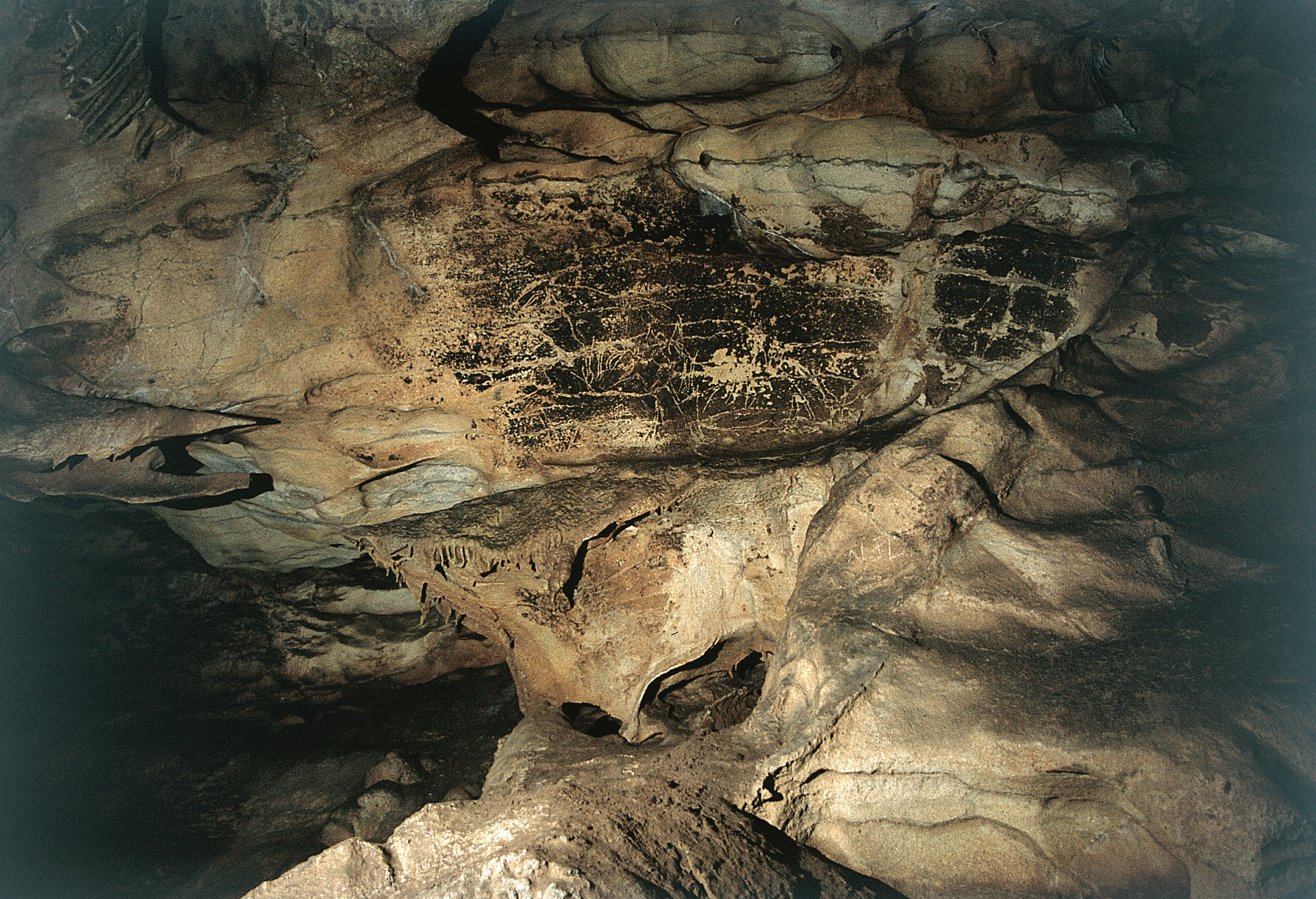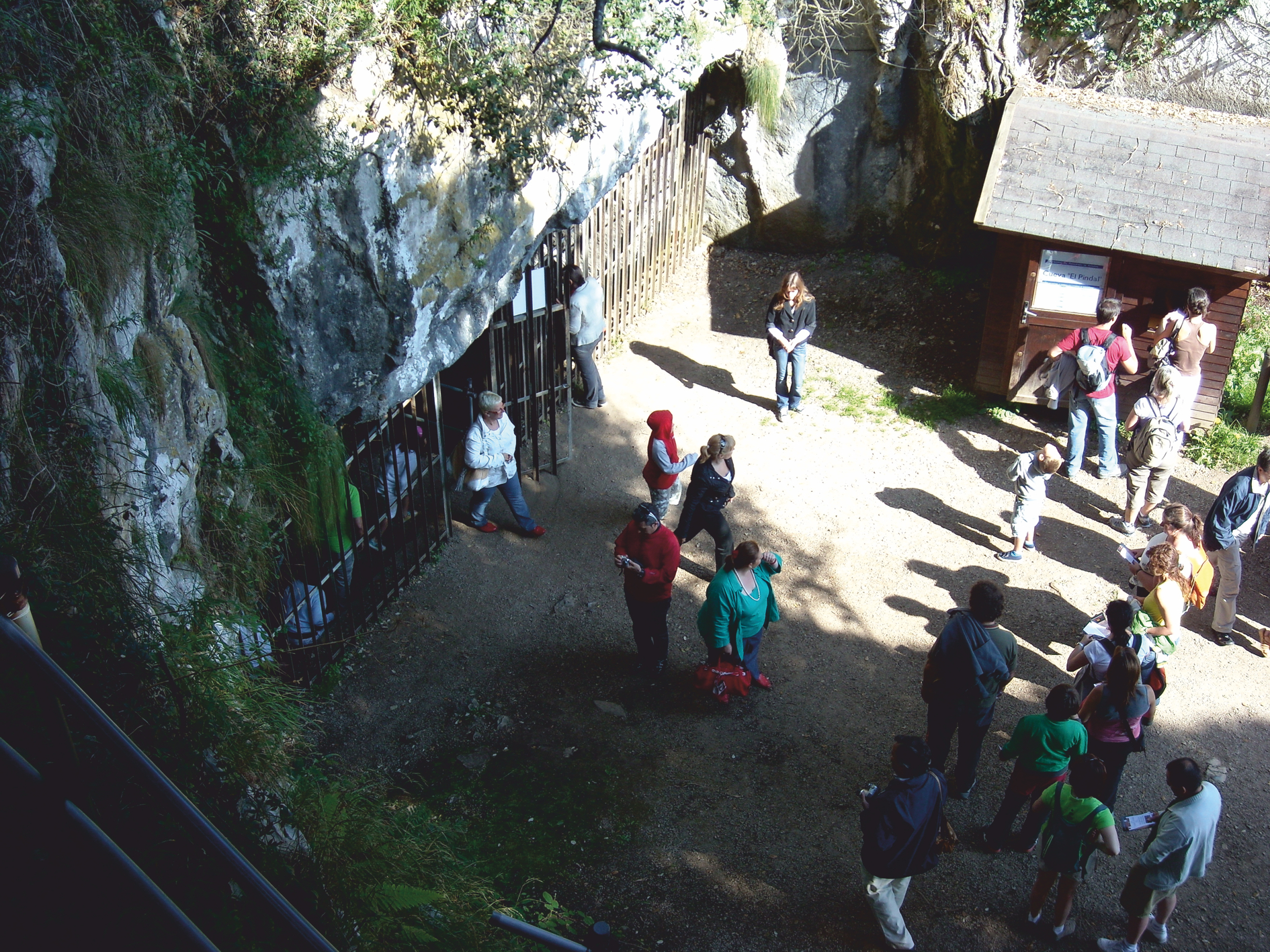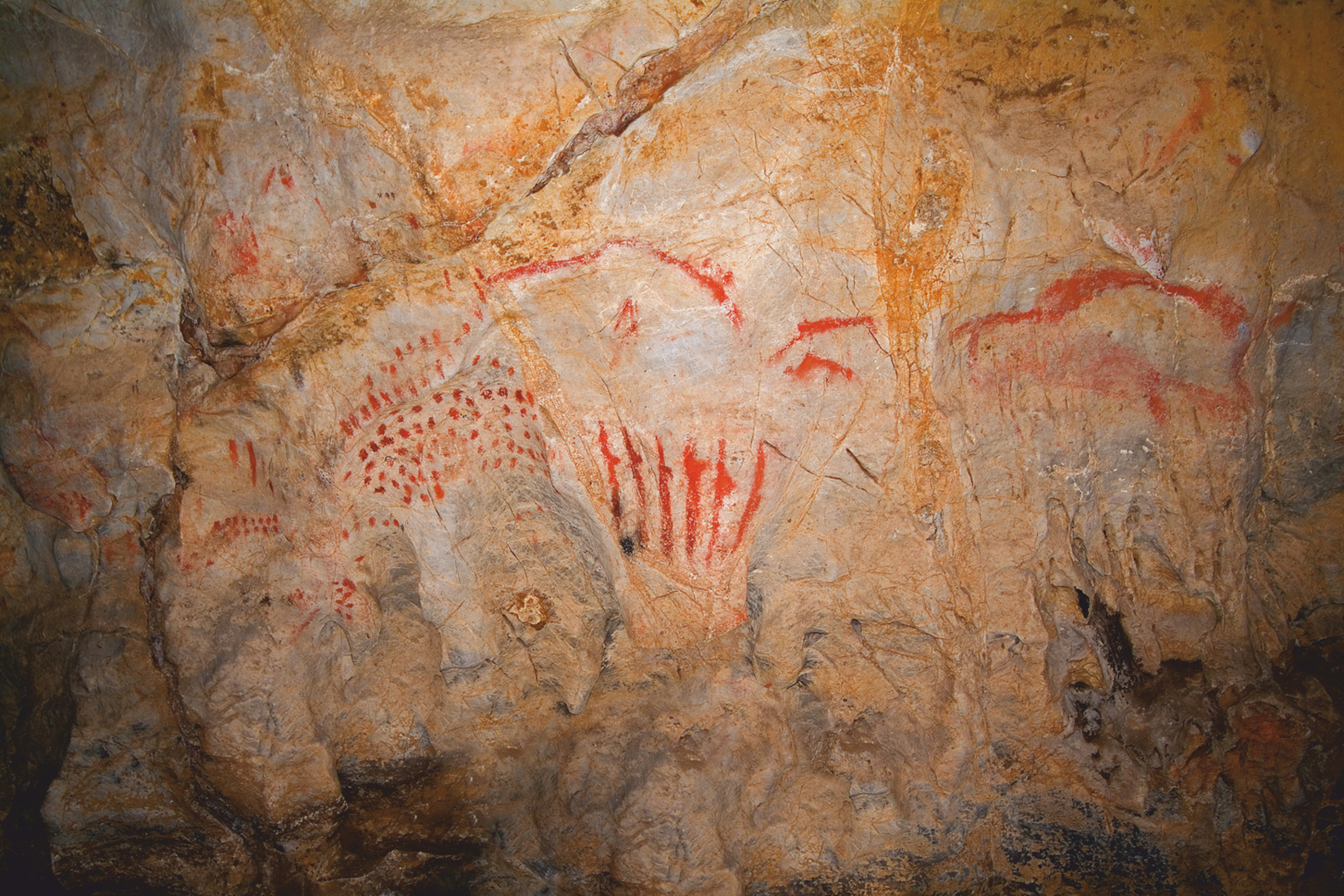Age of the artistic representations: Solutrean and Magdalenian.
General description of the destination: Rock art, paintings and engravings in a unique natural setting. El Pindal Cave is located at the mouth of the River Cares-Deva, at the eastern end of Asturias, in a section of the coastal strip known as Cape San Emeterio.
It has a single entrance above the sea, overlooking the coastline, and a longitudinal gallery of 600 metres in length, only the first 300 of which can be visited. Divided into five areas, this Magdalenian site houses zoomorphic representations such as deer, horses, bison, as well as a noteworthy fish and mammoth.
The paintings in El Pindal Cave were most likely done in different moments during the Magdalenian culture, and probably even before, over a broad period of time ranging between 18,000 and 13,000 years ago.
It is open all year long from Wednesday to Sunday. Four visits per day in groups fo 15 people maximum. The minimum age to access the Cave is 7 years.
The Interpretation Centre is open from Wednesday to Sunday and its entrance is free.
History of the site: The rock art in the cave was discovered by Hermilio Alcalde del Río in 1908.
Museographic resources description: San Emeterio and El Pindal Cave Interpretation Centre is located next to the entrance to the cave. The contents focus mainly on two sites: El Pindal Cave and the Monastery of Santa María de Tina. Both mark the chronological boundaries of the contents of this educational exhibition, serving as two significant extremes of the history of the area due to the quality of their historical assets.














